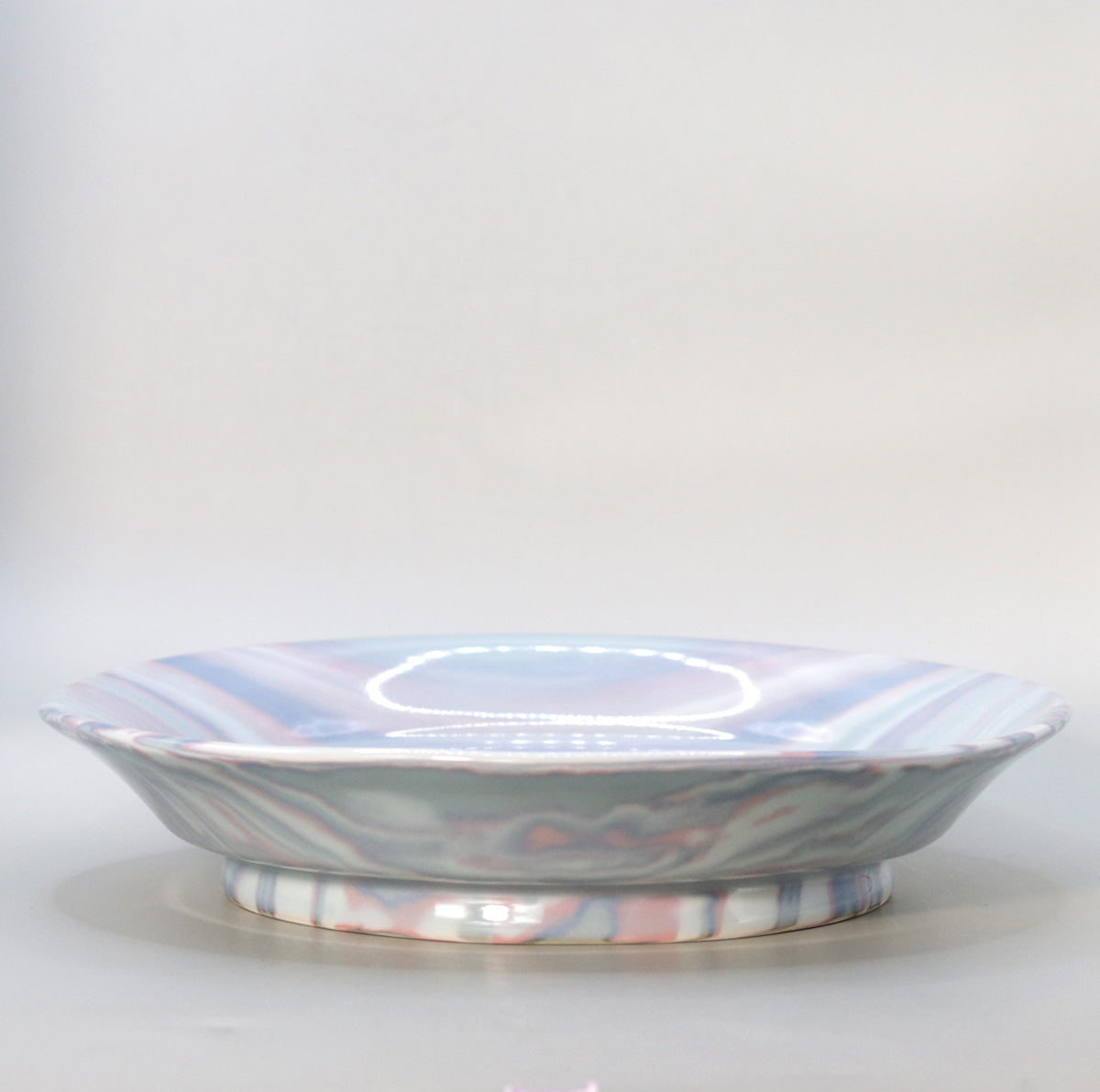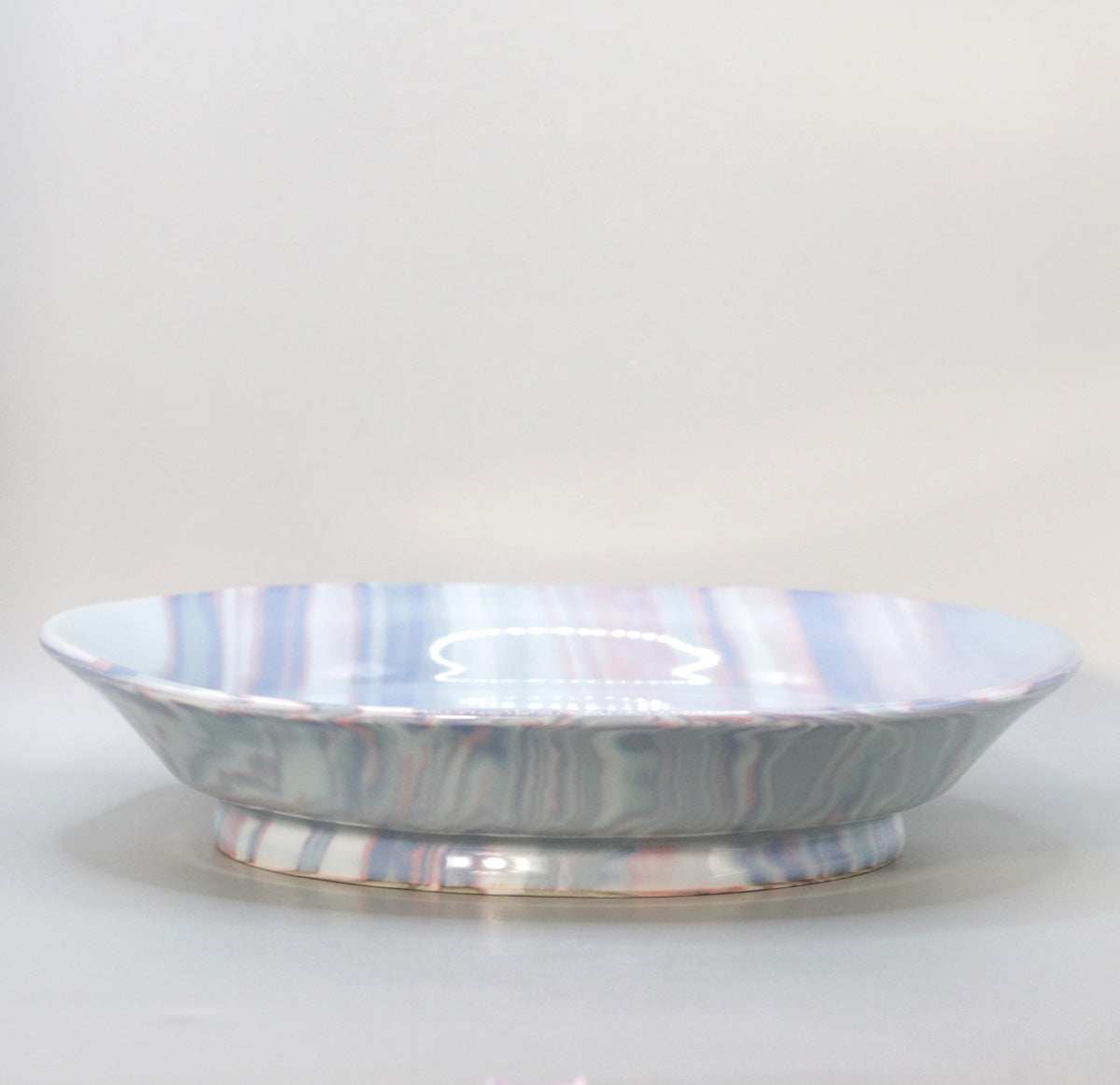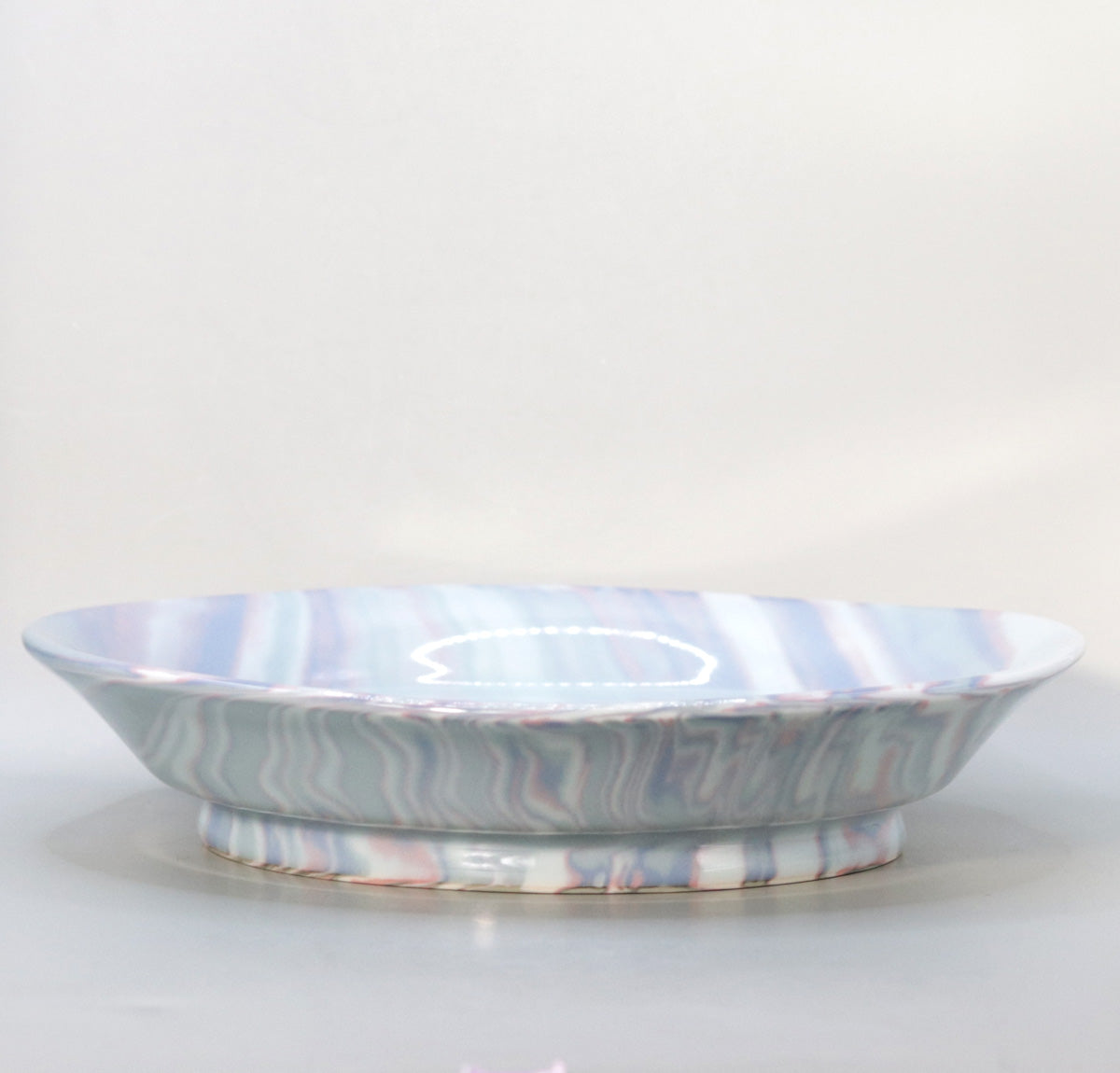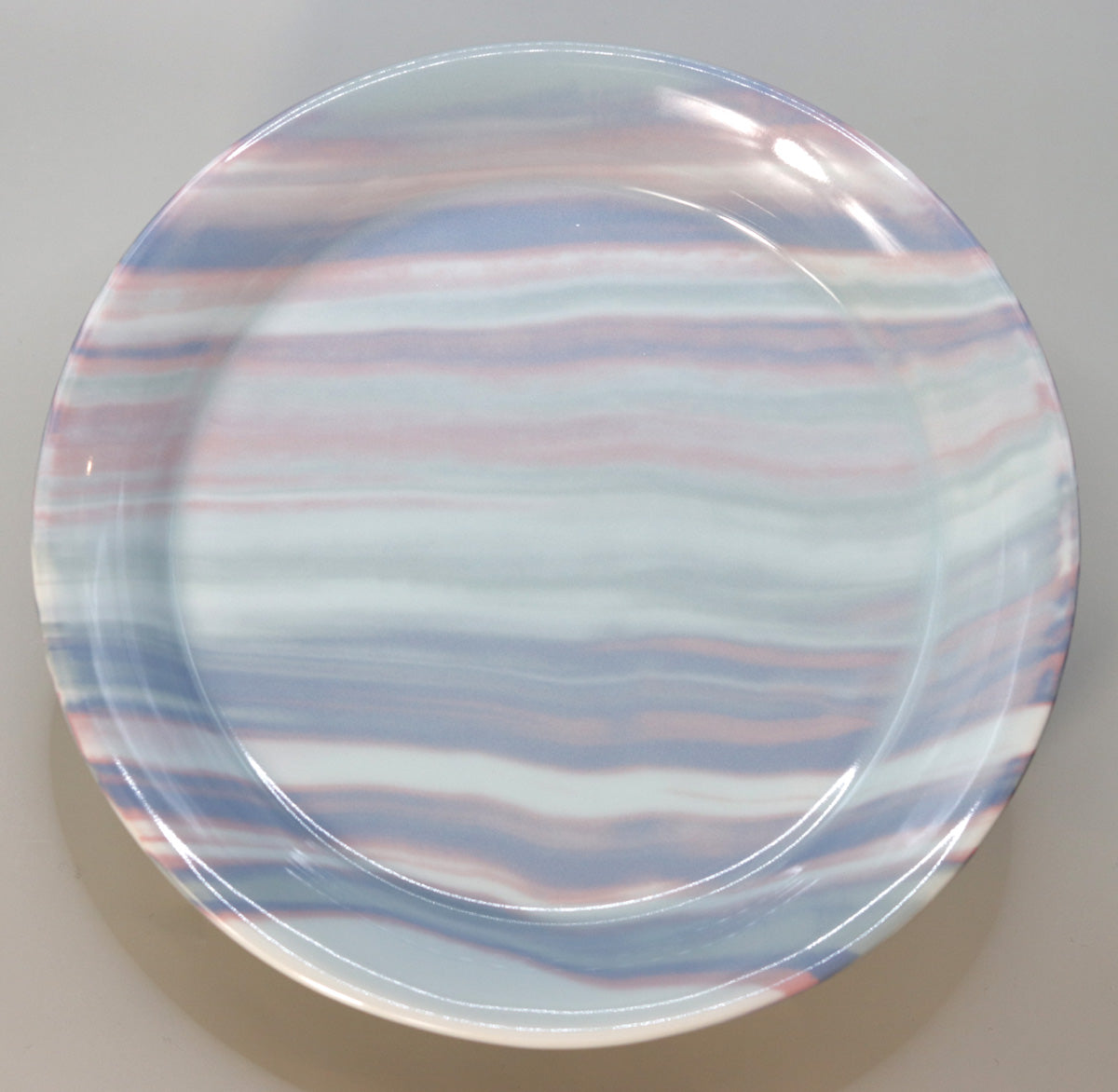Celadon confectionery container by Suwa Sozan
Celadon confectionery container by Suwa Sozan
Couldn't load pickup availability
Width: 22.7cm Height: 4.5cm
Capturing the heavenly scenery in a vessel - the poetic composition of nerikomi
This piece, "Nerikomi Celadon Candy Bowl," is made by layering four colors of porcelain clay - white porcelain, celadon porcelain, indigo blue porcelain, and red porcelain - in multiple layers, and shaping it so that the laws of nature depicted by the rotation of the potter's wheel are reflected directly on the vessel. Nerikomi is a highly advanced technique in which layers of clay are piled up and turned on a potter's wheel, rather than mixing multiple types of porcelain clay together. The greatest appeal of this piece is the pattern created by controlled chance, while excluding artificiality.
In particular, this piece is made by cutting open a circular cylinder and molding it into a plate , which creates a fantastical horizontal striped pattern that is different from the "swirl" pattern seen on matcha bowls. It is reminiscent of the bands of clouds seen when looking up at the sky at dusk, or the landscape of the universe with its trailing nebulae.
Color and Composition: A Symphony of Celestial Porcelain
The clarity of white porcelain, the serenity of celadon, the depth of indigo, and the soft light of red porcelain - the overlapping of these four colors of porcelain clay creates not just a geometric pattern, but an organic gradation that seems to exist in nature . In particular, in the area where red and blue intersect, a subtle purple expression is born, and you can feel the "accidental harmony" that is unique to the Nerikomi technique.
This natural overlapping of colors changes depending on how the light hits it, appearing cool in the morning light and slightly reddish in the evening, and embodying the fluctuations of luster that are unique to celadon. It is as if "time" and "space" are sealed within this piece.
Design and Use: Functional Beauty as a Confectionery Container
This piece, with a diameter of approximately 23cm, is an extremely ideal size for a confectionery container, and its exquisite design complements the colors of fresh confections such as nerikiri and kinton .
The quiet appearance of the celadon glaze complements the gorgeousness of the sweets, naturally creating an aesthetic of "harmony and contrast" at the tea ceremony . In particular, when white and red nerikiri are placed in this sweet bowl, they blend in with the base color of the bowl, creating the illusion that a "scenery is born within the bowl."
The edges are slightly raised, which is practical in that it prevents sweets from slipping off and gives a sense of security when held in the hand. The glaze is evenly applied, and the surface is smooth and glossy. When serving, it is also easy to handle, with less chance of dish towels or wooden ladles getting caught.
Technique and Spirituality - The Universe of Nerikomi Celadon
Although the kneading technique has been around for a long time, kneading multiple colors into porcelain requires extremely advanced techniques. If the firing shrinkage rate of each porcelain clay and the difference in the color of the fired product are not perfectly controlled, distortions and cracks will occur inside the vessel.
The fourth generation Sozan Suwa elevated this nerikomi porcelain to the realm of modern celadon, leading to the creation of forms with a time axis like the movement of celestial bodies and the creation of the universe . The patterns seen in this work can be said to be the result of a "poetic science" that transplants the flow of extraterrestrial time into a vessel.
Artists' lineage and aesthetic sense
Since its founding, the Suwa Sozan family has upheld the revival and modern reinterpretation of celadon, and has passed on its techniques and philosophy to the third and fourth generations. In particular, the fourth generation Suwa Sozan, whose mother was the twelfth generation Nakamura Sotetsu, is known as a rare artist who combines the aesthetic sense of the tea ceremony with the spirit of craftsmanship.
This piece is also based on the idea that "beauty is achieved through the skill to induce coincidence," and exists not as mere decoration but as a vessel that awakens the sensitivities of those who view and use it .
Conclusion: The richness of eating the sky
The "Nerikomi Seiji Confectionery Dish" is not just a dish. It is a poetic crystallization of modern ceramics that allows you to hold a heavenly view in the palm of your hand .
The Japanese sweets served in it represent the fleeting beauty of nature, and this vessel elevates that beauty even further to the heavens. It is as if you are scooping up the sky and bringing it to your mouth - that is the true value of this confectionery vessel.
Share








Multi-Column
-
[I will send it to you quickly and carefully]
We carefully package each product in a way that suits it best.
Also, delivery times vary depending on the piece (vessel, etc.).
Items that already come with a box will be shipped within 1-3 days of the order date.
For items that require a box to be made after your order, it will take approximately 30 days for production to be completed and then shipped.
In either case, once we have confirmed your order, we will contact you by email to inform you of the delivery date.
-
[Requests when purchasing pottery]
Even products that look the same may differ slightly in color, shape, size, etc.
The way the glaze is used, the power of the kiln, the firing method, the season, and the humidity also affect the appearance of the pottery.
Please understand the individuality of each piece of pottery and enjoy the unique warmth of handmade.








